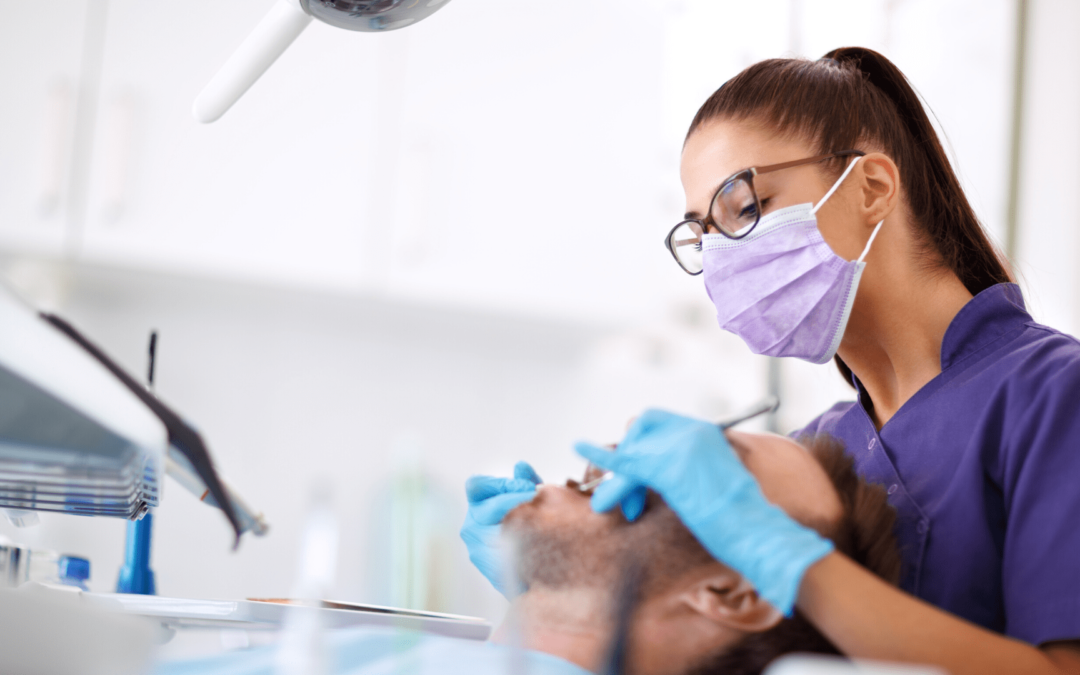When it comes to dental health, Australia may have a shiny smile on the surface, but beneath lies a deep-rooted problem. While we often boast about our world-class healthcare system, our dental health system seems to be lagging far behind. The high costs of dental care and lack of access to affordable options are causing many Australians to suffer in silence. It’s time we address this issue head-on and shine a light on the state of Australia’s dental health system.
Unfortunately, the burden falls heavily on low-income individuals who struggle to afford basic dental care. Many find themselves facing tough choices between paying bills or seeking treatment for their oral health issues. This lack of access leaves them susceptible not just to physical pain but also emotional distress and social isolation.
Poor oral health doesn’t just affect one’s smile; it has far-reaching consequences for overall well-being too! Studies have shown that untreated oral conditions can increase the risk of cardiovascular diseases, diabetes complications, respiratory infections – even premature births! Our mouths are gateways into our bodies’ overall health; neglecting them can lead us down a treacherous path.
Critics argue that these measures only scratch the surface without addressing underlying systemic issues such as insufficient funding or maldistribution of resources. While efforts are being made, the pace of change remains slow, leaving thousands unattended.
Australia’s dental health system and its current state
Australia’s dental health system is in dire need of attention. Despite the country’s reputation for providing top-notch healthcare, our dental care seems to have fallen through the cracks. Many Australians are left struggling with exorbitant costs and limited access to affordable options.
One of the biggest challenges faced by individuals seeking dental care is the high cost associated with it. Compared to other countries, Australians pay significantly more for common procedures such as fillings or root canals. Even routine check-ups can put a dent in one’s wallet.
This financial burden hits low-income individuals especially hard. For those already struggling to make ends meet, choosing between paying bills or seeking treatment becomes a painful reality. The lack of accessible and affordable dental care only exacerbates existing inequalities in our society.
What makes matters worse is that poor oral health has far-reaching consequences beyond just toothaches and cavities. Neglected oral conditions can lead to serious complications such as cardiovascular diseases, diabetes complications, respiratory infections – even premature births! Our overall well-being is at stake when we neglect our oral health.
While efforts have been made by the government to improve access to affordable dental care through initiatives like public clinics and subsidies for low-income individuals, these measures fall short in meeting the overwhelming demand. Insufficient funding and resource distribution continue to hinder progress in addressing this issue head-on.
The global cosmetic dentistry market size is thriving with new innovations and technologies emerging every day. However, in Australia, these advancements seem out of reach for many due to exorbitant costs and limited accessibility. As compared to other countries around the world, Australians pay significantly more for common dental procedures such as fillings, root canals, or even routine check-ups.
Australia’s dental health system certainly needs more than just cosmetic changes; it requires a comprehensive overhaul that prioritizes affordability and accessibility for all citizens. Until then, many Australians will continue to suffer silently.
The high costs of dental care in Australia compared to other countries
Have you ever felt the sting of a dental bill that left your pockets feeling significantly lighter? Well, if you’re living in Australia, chances are you’ve experienced this firsthand. The high costs of dental care in Australia are leaving many individuals with no choice but to neglect their oral health.
Compared to other countries around the world, Australia’s dental fees are sky-high. In fact, a recent study found that Australians pay some of the highest prices for routine dental procedures and treatments. From fillings and cleanings to more complex procedures like root canals and crowns, the price tag attached to maintaining good oral health is enough to make anyone wince.
The exorbitant costs have resulted in a significant barrier for low-income individuals who simply cannot afford regular dental visits or necessary treatments. This lack of access to affordable care has led to widespread disparities in oral health outcomes across socioeconomic lines.
Unfortunately, neglecting oral health doesn’t just result in an unsightly smile; it can also have serious consequences on overall well-being. Poor oral health has been linked to various systemic conditions such as cardiovascular disease and diabetes. Ignoring dental issues now may lead to even costlier medical bills down the line.
To address these concerns, the Australian government has implemented initiatives aimed at improving access and affordability of dental care for disadvantaged populations. These include programs such as public clinics and subsidies for certain groups like children or seniors. However, critics argue that these measures fall short of meeting the growing demand for accessible dentistry services across all income brackets.
While Australia’s healthcare system strives towards providing comprehensive coverage, its approach towards dentistry leaves much room for improvement. The high costs associated with dental care create barriers that prevent many individuals from receiving timely treatment and maintenance services they need – resulting not only in poor oral health but potential long-term consequences on overall well-being as well.
Lack of access to affordable dental care for low-income individuals
Lack of access to affordable dental care is a pressing issue for low-income individuals in Australia. While dental health is crucial for overall well-being, many people are unable to afford the high costs associated with dental treatments and procedures.
For those living on limited incomes, visiting the dentist can often be a luxury they simply cannot afford. The cost of even basic dental check-ups and cleanings can quickly add up, making it difficult for low-income individuals to prioritize their oral health. As a result, preventive care may be neglected, leading to more serious dental problems down the line.
This lack of access to affordable dental care has far-reaching consequences beyond just oral health. Poor oral hygiene has been linked to various systemic diseases such as cardiovascular disease and diabetes. It can also negatively impact an individual’s self-esteem and confidence, affecting their social interactions and mental well-being.
While there have been some government initiatives aimed at addressing this issue, such as public dental clinics and Medicare-funded services, they often face criticism for long wait times and limited availability. Additionally, private insurance coverage for dental care remains expensive or inadequate for many low-income individuals.
To truly tackle this problem, comprehensive reforms are needed that prioritize accessible and affordable dental care for all Australians. This includes increased funding for public clinics, subsidies or discounts on necessary treatments for low-income individuals, and greater integration between general healthcare providers and dentists.
Only by addressing the root causes of this issue can we ensure that everyone has equal access to quality dental care regardless of their income level. After all, good oral health should not be a privilege reserved only for those who can afford it!
The impact of poor dental health on overall health and well-being
Poor dental health can have a significant impact on our overall health and well-being. It’s not just about having a beautiful smile; it goes much deeper than that. Our oral health is closely connected to various aspects of our body, including our cardiovascular system, respiratory system, and even mental health.
When we neglect our dental hygiene or fail to address dental issues promptly, it can lead to serious consequences. Gum disease, for example, has been linked to an increased risk of heart disease and stroke. The inflammation caused by gum disease can spread throughout the body and contribute to inflammation in other areas as well.
Furthermore, poor oral health can also affect our ability to eat nutritious food properly. When we have missing teeth or painful gums, it becomes challenging to chew certain foods like fruits and vegetables. This can result in an inadequate intake of essential vitamins and minerals needed for overall wellness.
Additionally, poor dental health can take a toll on our self-esteem and confidence levels. Dental problems such as cavities or stained teeth may make us feel embarrassed about smiling or interacting with others freely.
It’s crucial to recognize that maintaining good oral hygiene is not only about aesthetics but also about safeguarding our general well-being. Regular visits to the dentist for check-ups and cleanings are essential in preventing potential issues before they escalate into more severe problems.
By prioritizing proper dental care practices – such as brushing twice daily with fluoride toothpaste, flossing regularly, eating a balanced diet low in sugary snacks – we can ensure better oral health outcomes while positively impacting our overall physical and emotional wellness too!
Government initiatives and policies in place to address the issue
Government initiatives and policies play a crucial role in addressing the dental health issue in Australia. Recognizing the importance of oral healthcare, the government has implemented various programs to improve access and affordability.
One such initiative is the Child Dental Benefits Schedule (CDBS), which provides eligible children with up to $1,000 worth of dental services over a two-year period. This program aims to ensure that children receive early intervention and preventive care, setting them on a path towards good oral health.
In addition, the government has established public dental clinics across the country to cater to low-income individuals who cannot afford private dental care. These clinics offer a range of affordable services including check-ups, cleanings, fillings, and extractions.
To further support those in need, concessional patients can access subsidised treatment through public or private providers under state-funded schemes like public hospitals or community health centers. This helps alleviate financial barriers for vulnerable populations.
Moreover, there are several targeted initiatives aimed at specific demographics such as Indigenous Australians and elderly citizens. These programs focus on improving accessibility by providing culturally appropriate care and outreach services for remote areas.
While these initiatives have made strides towards improving dental healthcare accessibility in Australia, challenges still remain. Long waiting lists for public clinics persist due to high demand outweighing available resources. Furthermore, many people still struggle with out-of-pocket costs even with government subsidies.
To tackle this pressing issue head-on with marketing dentistry in Australia, the government has implemented various initiatives and policies aimed at improving access to affordable dental care. Programs like public clinics or subsidies for low-income individuals offer some relief but fall short when faced with overwhelming demand.
While government efforts are commendable in tackling Australia’s dental health crisis, there is room for improvement to ensure that all individuals can access affordable and high-quality dental care without facing significant financial burdens.
Criticisms and shortcomings of these initiatives
While the Australian government has made efforts to address the issues surrounding dental health, there are still criticisms and shortcomings that need to be acknowledged. One major criticism is that the current initiatives primarily focus on addressing emergency or urgent dental care needs, rather than prioritizing preventative care.
Additionally, there is a lack of funding allocated specifically for low-income individuals who struggle with accessing affordable dental care. This leaves many vulnerable populations unable to afford necessary treatments or preventive measures, leading to further deterioration of their oral health.
Another concern is that the waiting times for public dental services can be lengthy, causing delays in receiving treatment. This poses a significant problem as certain conditions can worsen if not addressed promptly.
Furthermore, some argue that the bulk-billing system designed to assist eligible patients in affording dental care may result in reduced quality of treatment due to financial constraints faced by dentists who participate in this scheme.
There is limited emphasis placed on incorporating oral healthcare education into school curriculums. By educating children about proper oral hygiene practices from an early age, we can significantly reduce future cases of poor oral health.
Australia’s dental health system faces several challenges and limitations. The high costs of care compared to other countries along with inadequate access for low-income individuals pose significant barriers for many Australians seeking essential dental treatment. Addressing these issues requires comprehensive reforms that prioritize preventative care alongside adequate funding and support systems targeting disadvantaged communities. Only through effective collaboration between government bodies, healthcare professionals, and community organizations can we hope to improve Australia’s dental healthcare system and ensure better overall well-being for all its citizens.






